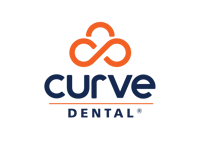Dental Revenue Cycle Management: The Essential Blueprint for Practice Profitability

In the dynamic landscape of modern dentistry, clinical excellence is only half the equation for success. The other, equally critical half is financial vitality. A practice can offer the most advanced patient care, but without a robust system for managing revenue, its potential for growth, innovation, and long-term stability remains capped. This is where a strategic approach to the financial side of the practice becomes paramount. The key to unlocking this potential lies in mastering a single, comprehensive process: Dental Revenue Cycle Management (RCM). This isn't just about billing; it's the complete financial blueprint that underpins a thriving, profitable practice.
The Critical Link Between RCM and Profitability
Effective Dental Revenue Cycle Management is the lifeblood of a practice's financial health. It directly influences cash flow, minimizes revenue leakage, and ensures the practice is compensated fully and promptly for the services it provides. A streamlined RCM process reduces administrative burdens, allowing staff to focus on higher-value tasks and patient care. Conversely, a disjointed or inefficient cycle leads to claim denials, delayed payments, and mounting accounts receivable—all of which erode profitability and hinder overall practice productivity.
What is Dental Revenue Cycle Management (RCM)?
Dental Revenue Cycle Management is the end-to-end financial process used to manage revenue from patient services, starting from the moment a patient schedules an appointment and concluding only when the practice has received full payment. It encompasses all administrative and clinical functions that contribute to the capture, management, and collection of patient service revenue. This holistic view transforms billing from a reactive task into a proactive strategy for sound financial management.
Deconstructing the Dental RCM Blueprint: Foundational Stages for Success
The Dental Revenue Cycle Management (RCM) process is a continuous cycle encompassing six key stages, ensuring efficient revenue generation and financial stability for dental practices.
A successful RCM strategy is built on a series of interconnected stages. Flawless execution at each step is crucial, as an error in one stage can create a cascade of problems down the line.
Stage 1: Pre-Service – Patient Registration & Eligibility Verification
The revenue cycle begins before the patient even sits in the dental chair. This foundational stage involves collecting accurate patient demographic information and, most importantly, performing proactive insurance eligibility and benefits verification. Confirming active coverage, understanding deductibles, and identifying co-payment responsibilities upfront prevents surprises for both the patient and the practice. This single step is one of the most effective ways to prevent future claim denials and ensure a smooth patient financial experience.
Stage 2: Service – Accurate Documentation & Coding for Revenue Integrity
During the patient encounter, revenue integrity hinges on meticulous clinical documentation and precise coding. Every service provided must be documented clearly in the patient’s chart to support the codes submitted on an insurance claim. Using the correct CDT (Current Dental Terminology) codes is non-negotiable. Errors or omissions in coding are a primary driver of claim rejections and audits, directly impacting revenue and creating unnecessary rework.
Stage 3: Post-Service – Efficient Claim Submission & Tracking
Once services are rendered and coded, the claim must be submitted to the payer promptly and accurately. Modern practice management software facilitates this through electronic claim submission, which is significantly faster and more reliable than manual paper processes. A "clean claim"—one that is free of errors and submitted correctly the first time—is the goal. After submission, diligent tracking is essential to monitor the claim's status and ensure it is processed in a timely manner.
Stage 4: Post-Service – Payment Posting & Reconciliation
When payments are received from insurance payers, they must be accurately posted to the corresponding patient accounts. This includes posting the insurance payment, applying any contractual adjustments, and identifying the remaining balance that is the patient's responsibility. Meticulous reconciliation of payments received against claims submitted ensures that the practice’s financial records are accurate and provides a clear picture of outstanding revenue.
Stage 5: Post-Service – Proactive Denial Management & Appeals (Deep Dive)
Despite best efforts, claim denials are an unfortunate reality; industry data shows that up to 15% of dental insurance claims are denied. An effective RCM blueprint doesn't just react to denials—it manages them proactively. The first step is to analyze the reason for each denial. Common causes include coding errors, lack of pre-authorization, or missing documentation. The team must then systematically appeal unwarranted denials with supporting documentation. This stage is a critical revenue recovery point. Analyzing denial trends over time also provides valuable insights to refine front-end processes and prevent future denials, turning a reactive problem into a proactive quality improvement loop.
Stage 6: Post-Service – Patient Billing & Collections Optimization
After insurance payments are posted, the final stage involves collecting the remaining balance from the patient. This requires clear, timely, and easy-to-understand patient statements. Offering multiple payment options, including online portals and payment plans, improves the patient experience and accelerates collections. Given that practices saw a 45.5% increase in credit card payments since 2019, facilitating these transactions is crucial. A structured, professional, and empathetic approach to patient collections is vital for securing this final piece of the revenue puzzle while maintaining positive patient relationships.
Strategic Pillars for RCM Optimization: Building a High-Performance System
Mastering the foundational stages is essential, but achieving true RCM excellence requires building upon them with strategic pillars that leverage technology, people, and data.
Leveraging Technology and Automation: The Digital Advantage
Technology is the engine of modern RCM. Integrated practice management software automates and connects every stage of the revenue cycle, from scheduling to final payment. The most significant leap forward comes from innovation in Artificial Intelligence (AI). AI-powered tools can automatically scrub claims for errors before submission, predict the likelihood of denial based on historical data, and streamline the appeals process. This level of automation significantly boosts practice productivity, reduces human error, and frees up staff for more complex, patient-facing tasks. As a testament to this trend, over 60% of dental practices are expected to adopt AI-driven billing solutions by 2025.
The Human Element: Training, Teamwork, and Accountability
While technology is a powerful enabler, it is only as effective as the team using it. A well-trained staff is the cornerstone of a high-performance RCM system. Continuous education on coding updates, payer policies, and software features is essential. This is especially critical as 62% of dentists cite staffing shortages as a top challenge, making each team member's efficiency paramount. Fostering a culture of teamwork, where front-office and clinical staff understand their roles in the revenue cycle, and establishing clear accountability for RCM metrics ensures everyone is working toward the same financial goals.
Mastering RCM Metrics: Key Performance Indicators (KPIs) for Actionable Insights
You cannot manage what you do not measure. Effective financial management requires tracking key performance indicators (KPIs) to monitor the health of your revenue cycle. Essential RCM metrics include:
-
Days in Accounts Receivable (A/R): Measures the average number of days it takes to collect payments. A lower number is better.
-
Clean Claims Rate: The percentage of claims accepted by the payer on the first submission. Aim for 95% or higher.
-
Denial Rate: The percentage of claims denied by payers. Tracking this helps identify and address root causes.
-
Net Collection Rate: The percentage of collectible revenue that is actually collected.
Regularly reviewing these KPIs provides actionable insights to identify bottlenecks and opportunities for improvement.
Strategic RCM Models: Insourcing, Outsourcing, or Hybrid?
Practices have several options for structuring their RCM operations. Insourcing keeps all RCM functions in-house, offering maximum control but requiring significant investment in staff and training. Outsourcing involves partnering with a specialized company to handle all or part of the revenue cycle, which can provide expertise and efficiency. The growing popularity of this model is reflected in the projected 12.5% annual growth of the U.S. dental billing outsourcing market. A Hybrid model combines both, perhaps keeping patient-facing tasks in-house while outsourcing complex functions like claim submission and denial management. The right choice depends on the practice's size, resources, and strategic goals.
Compliance and Ethical Considerations in Dental RCM
A robust RCM blueprint must be built on a foundation of compliance and ethics. This includes strict adherence to HIPAA regulations to protect patient information and following all state and federal billing regulations. Accurate coding and transparent billing practices are not just good business; they are ethical imperatives that build trust with patients and payers alike.
RCM as a Catalyst for Practice Growth and Patient Loyalty
When optimized, RCM transcends its administrative function and becomes a powerful engine for strategic growth and enhanced patient relationships.
Fueling Practice Expansion and DSO Growth
A predictable and healthy cash flow, driven by efficient RCM, is the fuel for practice growth. It provides the capital necessary to invest in new technology, expand facilities, hire additional staff, or even acquire another practice. For Dental Service Organizations (DSOs), standardized and optimized RCM across all locations is fundamental to achieving operational efficiency and maximizing enterprise-wide profitability, especially when dealing with challenges like rising overhead, which 65% of practices reported in 2023.
Enhancing Patient Experience and Building Trust
The financial aspect of dental care is a significant part of the overall patient experience. A transparent and seamless RCM process builds trust and loyalty. When patients understand their financial responsibility upfront, receive clear statements, and have access to convenient payment options, their satisfaction increases dramatically. A smooth financial journey complements clinical excellence and is a key differentiator in a competitive market.
Future-Proofing Your Dental RCM: Embracing Innovation
The world of dental billing and financial management is constantly evolving. A forward-thinking practice must be prepared to adapt and embrace the changes on the horizon.
Emerging Technologies and Trends Shaping Dental RCM
The future of RCM is increasingly digital and data-driven. Expect to see deeper integration of AI and machine learning for predictive denial analysis and automated patient communication. Patient-facing technology, such as mobile payment apps and digital registration forms, will become standard. Furthermore, the shift towards value-based care models in some areas will require RCM systems capable of tracking quality metrics alongside financial data, further cementing the link between clinical outcomes and revenue.
Conclusion: Your Blueprint for Sustainable Practice Profitability
An optimized Dental Revenue Cycle Management system is the essential blueprint for a financially successful and sustainable practice. It is a strategic asset that impacts everything from daily cash flow to long-term growth potential.
Recap of the Essential RCM Blueprint Components
The blueprint for profitability involves mastering the six foundational stages—from pre-service verification to patient collections—and reinforcing them with strategic pillars. This includes leveraging technology and AI, empowering a well-trained team, diligently tracking KPIs, choosing the right operational model, and upholding strict compliance.
The Path Forward: Taking Action for a Healthier Bottom Line
Building a high-performance RCM system is an ongoing journey of refinement. Start by assessing your current processes to identify areas of weakness. Invest in modern practice management software that offers automation and robust analytics. Commit to continuous team training and begin tracking your key RCM metrics today. By taking these deliberate steps, you can transform your revenue cycle from a simple administrative function into a powerful engine driving practice productivity, growth, and lasting profitability.
*This content was partially generated by artificial intelligence. It may contain errors or inaccuracies, and should not be relied upon as a substitute for professional advice.

Curve Dental
Welcome to the official blog of Curve Dental. Serving up content about the team behind Curve Dental
